The Parsley Plant - Probably the Most
Useful Herb in The World!
This is the world’s most popular herb and the leaves, stems and even the roots of the parsley plant (petroselinum crispum) are common garnish for dishes all across Europe, North America and Asia.
It was originally grown in areas around the Mediterranean, including Italy and North Africa, and has been in wide use for more than 2,000 years, but originally it was grown for its medicinal value, not for cuisine.
History and Uses of the Herb
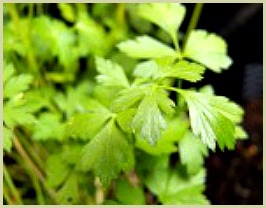
Ancient Greeks believed this herb was sacred, using it to adorn the winners of athletic competition and for marking tombs.
But it was the ancient Romans who first began the practice of using the leaves to garnish food, and it began to be used as flavouring sometime during the Middle Ages.
There are a number of varieties; the two main ones being curly leaf and Italian (or flat leaf).
The flat leaf is thought to have a stronger taste, while many prefer the curly leaf variety for its decorative appearance. Read more about curly leaf parsley.
If you're in the markets of Europe, you may encounter Hamburg parsley. This variety is commonly called turnip rooted, and is cultivated for its turnip looking roots, though the taste is very different.
Cooking With the Parsley Plant
Mild and fresh in its taste, bright in its colour, it can be used with any kind of food, from potatoes and rice to fish, chicken or even stews.
French chefs use it as part of fines herbes and bouquet garnis to flavour stocks, soups and sauces.
If you're growing it, use seed for the best results. Sow the seed in moist, well-drained soil with full sunlight and warm temperatures. More tips on growing parsley.
You can, of course, use it dried in your cooking , but, if available, fresh is always best. Look for crisp leaves and a rich green colour for the best possible result.
The Medicinal Benefits of the Parsley Plant
Aside from its obvious culinary appeal, it also has a number of medicinal and well-being benefits.
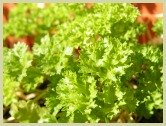
The leaves are rich in Vitamin A and Vitamin C, as well as folate. And as it's a strong antioxidant, it helps increase the antioxidant capacity of your blood.
Click to read more on the all round goodness and benefits of parsley.
In traditional Chinese medicine they make a tea from the leaves to help regulate high blood pressure.
As this herb has lots of vitamins and minerals, I often make the tea myself. See my parsley tea page for the recipe.
As a cheap, healthy breath freshener, you can chew the fresh leaves. This is something ancient folks used to do before toothpaste came along.
Links to Other Plants You May Enjoy Reading About
Basil Herb - It's Not
|
The Aromatic Thyme Plant - Culinary Uses and
|
All You Need to Know
|
Click on the buttons above to follow me on your favourite social media:
by
Jason Pitcher
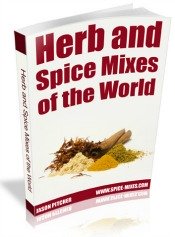
Sign up to my monthly newsletter and get a
FREE Book!
Click on the buttons above to follow me on your favourite social media:

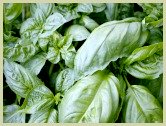
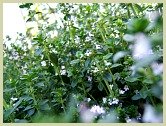
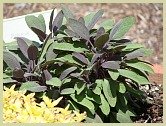





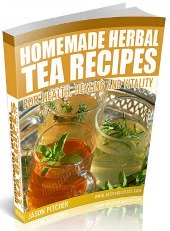
New! Comments
Have your say about what you just read! Leave me a comment in the box below.